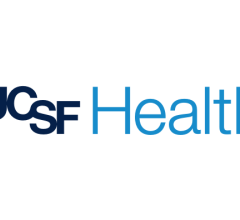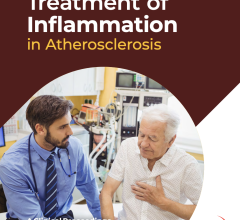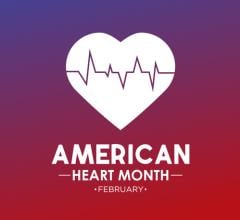
August 29, 2022 — The US Preventive Services Task Force (USPSTF) has issued a Recommendation Statement, relating to Statin Use for the Primary Prevention of Cardiovascular Disease in Adults, published in the Journal of American Medical Association (JAMA), August 23, 2022. This recommendation replaces the 2016 USPSTF recommendation on statin use for the primary prevention of CVD and is generally consistent with that recommendation.
In reinforcing the importance of establishing updated recommendations, the USPSTF statement noted the following statistics:
Coronary heart disease is the single leading cause of death and accounts for 43% of deaths attributable to CVD in the US.
In 2019, an estimated 558,000 deaths were caused by coronary heart disease, and 109,000 deaths were caused by ischemic stroke.
Men have a higher overall prevalence of and mortality from CVD, although women experience higher mortality from certain cardiovascular events, such as stroke. On average, men experience CVD events earlier in life compared with women.
The prevalence of CVD also differs by race and ethnicity. Among both sexes, Black adults have the highest prevalence of CVD.
USPSTF Recommendations
The USPSTF recommends that clinicians prescribe a statin for the primary prevention of CVD for adults aged 40 to 75 years who have 1 or more CVD risk factors (i.e., dyslipidemia, diabetes, hypertension, or smoking) and an estimated 10-year CVD risk of 10% or greater.
The USPSTF recommends that clinicians selectively offer a statin for the primary prevention of CVD for adults aged 40 to 75 years who have 1 or more of these CVD risk factors and an estimated 10-year CVD risk of 7.5% to less than 10%. The likelihood of benefit is smaller in this group than in persons with a 10-year risk of 10% or greater. (C recommendation) The USPSTF concludes that the current evidence is insufficient to assess the balance of benefits and harms of initiating a statin for the primary prevention of CVD events and mortality in adults 76 years or older.
The Evidence Assessment issued by the USPSTF follows:
The USPSTF concludes with moderate certainty that statin use for the prevention of CVD events and all-cause mortality in adults aged 40 to 75 years with no history of CVD and who have 1 or more CVD risk factors (ie, dyslipidemia, diabetes, hypertension, or smoking) and an estimated 10-year CVD event risk of 10% or greater has at least a moderate net benefit. The USPSTF concludes with moderate certainty that statin use for the prevention of CVD events and all-cause mortality in adults aged 40 to 75 years with no history of CVD and who have 1 or more of these CVD risk factors and an estimated 10-year CVD event risk of 7.5% to less than 10% has at least a small net benefit. The USPSTF concludes that the evidence is insufficient to determine the balance of benefits and harms of statin use for the primary prevention of CVD events and mortality in adults 76 years or older with no history of CVD.
Supporting Evidence and Scope of Review
To update its 2016 recommendation, the US Preventive Services Task Force (USPSTF) commissioned a review of the evidence on the benefits and harms of statins for reducing CVD-related morbidity or mortality or all-cause mortality. The population was defined as adults 40 years or older without a history of known CVD and who do not have signs and symptoms of CVD. The statement also noted these recommendations do not apply to adults with a low-density lipoprotein cholesterol (LDL-C) level greater than 190 mg/dL (4.92 mmol/L) or known familial hypercholesterolemia. These populations are at very high risk for CVD, and considerations on the use of statins in these populations can be found in other organizations’ guidelines.
The evidence review also investigated whether the benefits or harms of statin treatment vary in populations of interest defined by demographic, clinical, or socioeconomic characteristics, by statin intensity, or by titration of statin therapy to a target LDL-C level vs use of a fixed statin dose.
Assessment of Magnitude of Net Benefit
The US Preventive Services Task Force (USPSTF) concludes with moderate certainty that statin use for the prevention of CVD events and all-cause mortality in adults aged 40 to 75 years with no history of CVD and who have 1 or more CVD risk factors (i.e., dyslipidemia, diabetes, hypertension, or smoking) and an estimated 10-year CVD event risk of 10% or greater has at least a moderate net benefit.
The USPSTF concludes with moderate certainty that statin use for the prevention of CVD events and all-cause mortality in adults aged 40 to 75 years with no history of CVD and who have 1 or more CVD risk factors (i.e., dyslipidemia, diabetes, hypertension, or smoking) and an estimated 10-year CVD event risk of 7.5% to less than 10% has at least a small net benefit. The decision to initiate therapy should depend on individual patient preference for a potential small benefit relative to the potential harms and inconvenience of taking a daily medication.
The USPSTF concludes that the evidence is insufficient to determine the balance of benefits and harms of statin use for the primary prevention of CVD events and mortality in adults 76 years or older with no history of CVD.
Update of Previous USPSTF Recommendation
As noted, this recommendation replaces the 2016 USPSTF recommendation on statin use for the primary prevention of CVD and is generally consistent with that recommendation.
The JAMA published statement offered detailed information on the Practice Considerations, including important insight into: Treatment and Statin Intensity; Implementation; Benefits and Harms of Preventive Medication; Tools and Resources; and other areas, in addition to the following Assessment of Risk.
Assessment of Risk
The American College of Cardiology/American Heart Association (ACC/AHA) Pooled Cohort Equations may be used to estimate 10-year risk of CVD. The ACC/AHA risk estimator is, to date, the only US-based CVD risk prediction tool that has published external validation studies in other US-based populations, according to the recommendation statement. The estimator has separate equations based on sex and for Black persons and non-Black persons, which include the risk factors of age, cholesterol levels, systolic blood pressure level, anti-hypertension treatment, presence of diabetes, and smoking status, and focuses on hard clinical outcomes (myocardial infarction and death from coronary heart disease; ischemic stroke and stroke-related death) as the outcomes of interest.
Age is one of the strongest risk factors for CVD, and the 10-year CVD event risk estimated by the ACC/AHA risk estimator is heavily influenced by increasing age. The risk prediction equations generally show higher risk for Black persons than White persons. The USPSTF recognizes that race is a social construct, and it is an imperfect proxy for social determinants of health and the effects of structural racism. Concerns about calibration of the Pooled Cohort Equations exist, with many external validation studies showing overprediction in broad populations (men and women across racial and ethnic groups). Limited evidence also suggests underprediction in disadvantaged communities that could lead to underutilization of preventive therapies. Clinicians should recognize that predictions of 10-year CVD events using the Pooled Cohort Equations are estimates.
The likelihood that a patient will benefit from statin use depends on their absolute risk of having a future CVD event, a risk estimation that, as noted above, is imprecise based on the currently available risk estimation tools. The higher a person’s 10-year risk of a CVD event, the greater the chance of benefit from statin use. Thus, the expected benefit of statin therapy for persons with a 10-year CVD risk of 10% or greater exceeds the expected benefit for persons with a 10-year CVD risk of 7.5% to less than 10%.
Clinicians should discuss with patients the potential risk of having a CVD event and the expected benefits and harms of statin use. For patients with an estimated 10-year CVD risk of 10% or greater and who smoke or have dyslipidemia, diabetes, or hypertension, the USPSTF recommends that clinicians prescribe a statin once the rationale has been explained and the patient agrees to take a statin. For patients with an estimated 10-year CVD risk of 7.5% to less than 10% (and who have ≥1 of the risk factors noted above), clinicians may selectively offer a statin, taking patient values and preferences into account. Patients in this estimated risk range who place a higher value on the potential benefits than on the potential harms and inconvenience of taking a daily medication may choose to initiate a statin.
Given that participants in clinical trials of statin therapy were enrolled based on the presence of 1 or more CVD risk factors, and that the magnitude of benefit of statin use is proportional to a person’s estimated 10-year CVD risk, the USPSTF recommends that clinicians evaluate both the presence of CVD risk factors (ie, dyslipidemia, diabetes, hypertension, or smoking) as well as estimated 10-year risk of CVD in determining which persons should initiate use of statins.
Research Needs and Gaps
Additionally, the Recommendation Statement identified specific research needs and gaps. It noted that more studies are needed that address the following, among other, considerations:
- Improving the accuracy of CVD risk prediction in all racial and ethnic and socioeconomic groups.
- The balance of benefits and harms of initiating statin use for the primary prevention of cardiovascular events in adults 76 years or older.
- The efficacy and safety of long-term statin use in adults younger than 40 years, and to determine the effects of earlier vs delayed initiation of statin use, particularly in persons with an estimated high long-term (longer than 10 years [e.g., lifetime]) risk of CVD.
USPSTF Members
The US Preventive Services Task Force members are: Carol M. Mangione, MD, MSPH, David Geffen School of Medicine, University of California, Los Angeles, and Corresponding Author; Michael J. Barry, MD; Wanda K. Nicholson, MD, MPH, MBA; Michael Cabana, MD, MA, MPH; David Chelmow, MD; Tumaini Rucker Coker, MD, MBA; Esa M. Davis, MD, MPH; Katrina E. Donahue, MD, MPH; Carlos Roberto Jaén, MD, PhD, MS; Martha Kubik, PhD, RN; Li Li, MD, PhD, MPH; Gbenga Ogedegbe, MD, MPH; Lori Pbert, PhD; John M. Ruiz, PhD; James Stevermer, MD, MSPH; John B. Wong, MD.
Related coverage:
https://www.dicardiology.com/content/acc-aha-hfsa-issue-joint-heart-failure-guideline
https://www.dicardiology.com/article/acc22-transforming-cardiovascular-care


 April 10, 2025
April 10, 2025 








